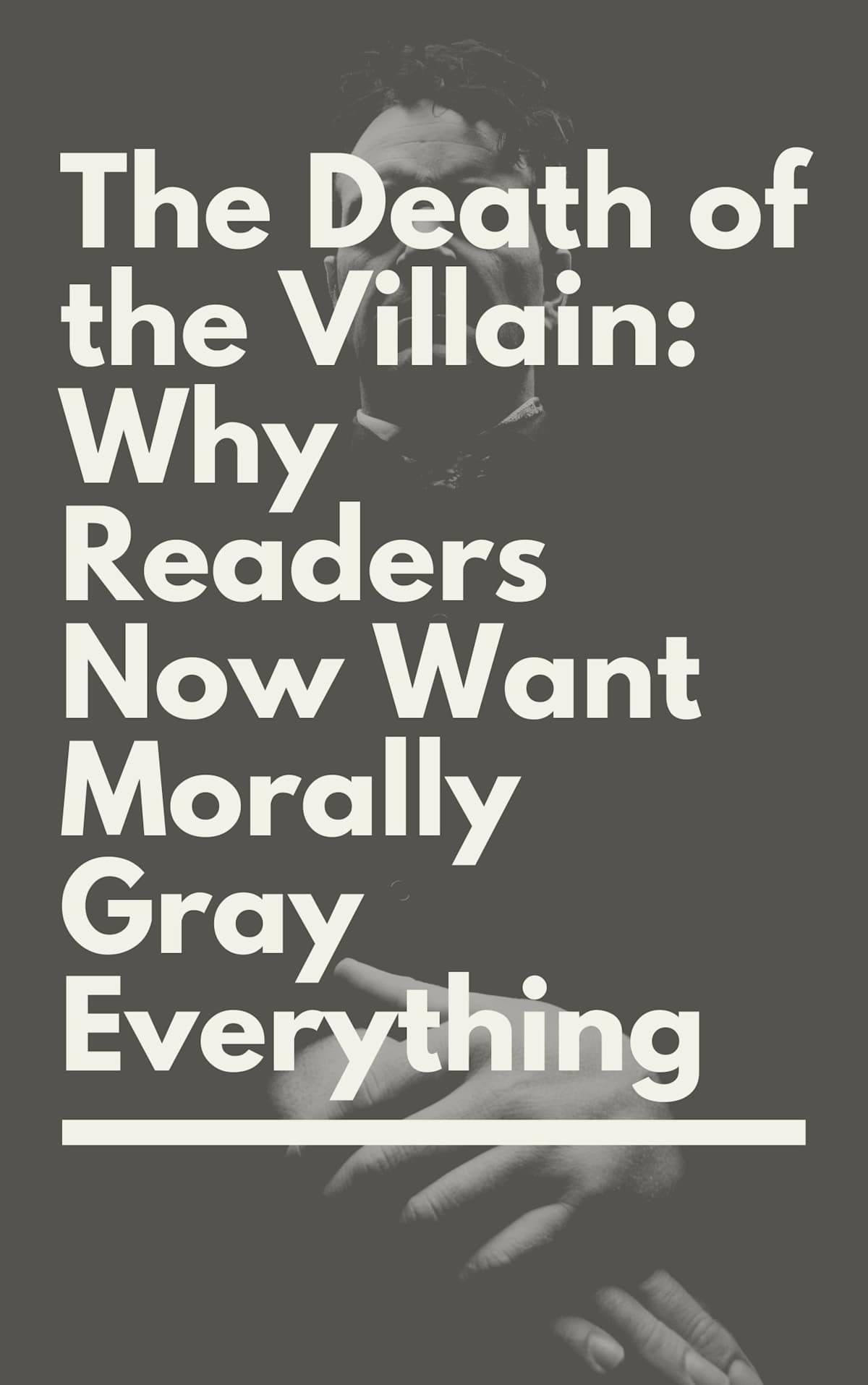Once upon a time, villains were easy to spot.
They wore black, twirled mustaches, and laughed when the world burned. Their purpose was clear: to embody evil so that good could have something to defeat. But readers have changed. We no longer crave moral certainty. We crave truth — the messy kind that doesn’t fit inside clean lines.
In this new era of storytelling, the villain has died, or rather, evolved into something far more complicated. The modern reader doesn’t want evil for evil’s sake. We want to know why.
The Evolution of the Villain
It used to be simple.
Maleficent cursed babies. Voldemort killed to live forever. Darth Vader destroyed planets to serve an empire. They were meant to represent what we feared most: power without empathy, greed without restraint, ambition without conscience.
But as culture shifted, so did our tolerance for moral simplicity. We no longer live in a world where good and evil wear different colors. We’ve watched heroes fail, leaders crumble, and systems betray. Naturally, our stories began to mirror that uncertainty.
The villains of the past decade — Killmonger in Black Panther, Villanelle in Killing Eve, even Kaz Brekker in Six of Crows — don’t stand at the edges of morality; they sit right in the middle. They force us to understand their logic, however twisted it might be. We may not agree, but we get it. And that’s what makes them powerful.
We no longer read to see good triumph. We read to understand how good people justify terrible things.
The Rise of Moral Ambiguity
It’s not just fiction — it’s a reflection of who we’ve become.
Audiences have grown weary of stories that hand out easy answers. We want to explore the in-between: the flawed father trying to save his child in The Last of Us, the chemistry teacher turned kingpin in Breaking Bad, the rebel who becomes what she once fought against.
These characters embody the truth that morality is situational, not static. They force us to ask questions we can’t neatly resolve. Would I have done the same thing? Is survival inherently selfish? Can love excuse destruction?
When I wrote The Chosen Trilogy, I wanted the “villains” to believe they were the saviors. That conviction — the belief that cruelty can be righteous — is more chilling than outright evil. It’s also more human.
Because the truth is, darkness rarely knows it’s dark.
The Reader’s Moral Mirror
Readers today don’t want to be told who’s right or wrong. We want to decide for ourselves. That’s why morally gray characters feel so magnetic: they hand the moral compass back to the audience.
The new villain isn’t a monster.
It’s a mirror.
When we empathize with someone doing the unthinkable, we’re forced to confront parts of ourselves we’d rather ignore — our fears, our pride, our hidden selfishness. Fiction becomes a space to wrestle safely with the ugly truth that morality isn’t fixed; it flexes under pressure.
And in that space, we find something more honest than the old binary of hero versus villain. We find the human condition itself.
What Writers Can Learn
Writers often ask how to make a villain more compelling. The answer isn’t cruelty — it’s complexity.
Here’s what helps:
- Give them a cause worth believing in.
- Let them show kindness when it’s least expected.
- Reveal the scar beneath the armor.
- And above all, make sure they think they’re right.
At the same time, let your heroes stumble. Let them make choices that feel wrong but understandable. The best stories aren’t clean; they’re conflicted. And conflict, after all, is the beating heart of fiction.
The Gray Horizon
In killing the villain, we’ve stopped chasing monsters and started chasing meaning.
Modern stories don’t ask us to cheer for the hero anymore. They ask us to recognize ourselves in the gray.
Maybe that’s why this era of fiction feels so electric. We’re not reading to escape reality. We’re reading to see it clearly, to understand that every choice, every flaw, every shadow has its reason.
The death of the villain isn’t an ending.
It’s an evolution. One that mirrors our own search for grace in a world where right and wrong often wear the same face.
